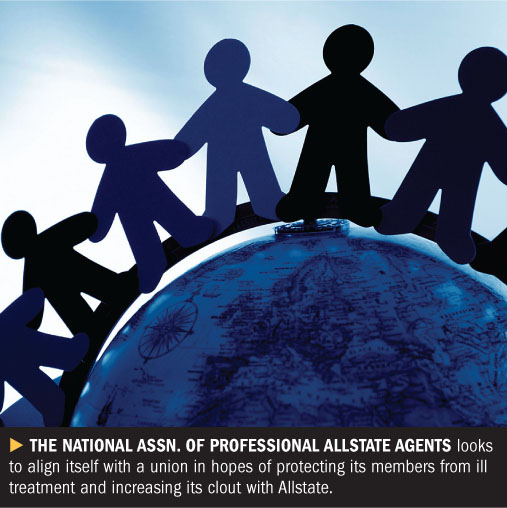An Allstate agents' group is asking its members to consider aligning with a union and forming a guild to aid in its fight against what the group says are unfair business practices toward agents by the company.
 The National Association of Professional Allstate Agents Inc. (NAPAA) says it is asking members to vote on a proposal for the association to affiliate with the Office and Professional Employees International Union (OPEIU) as a guild.
The National Association of Professional Allstate Agents Inc. (NAPAA) says it is asking members to vote on a proposal for the association to affiliate with the Office and Professional Employees International Union (OPEIU) as a guild.
“Agent morale at Allstate has hit rock bottom, which cannot be good for the company, the agents or the shareholders,” says Jim Fish, NAPAA executive director, in a statement. “This is not a matter of political philosophy; it's a matter of defending the interests of ill-treated small-business owners.”
Recommended For You
Want to continue reading?
Become a Free PropertyCasualty360 Digital Reader
Your access to unlimited PropertyCasualty360 content isn’t changing.
Once you are an ALM digital member, you’ll receive:
- Breaking insurance news and analysis, on-site and via our newsletters and custom alerts
- Weekly Insurance Speak podcast featuring exclusive interviews with industry leaders
- Educational webcasts, white papers, and ebooks from industry thought leaders
- Critical converage of the employee benefits and financial advisory markets on our other ALM sites, BenefitsPRO and ThinkAdvisor
Already have an account? Sign In Now
© Touchpoint Markets, All Rights Reserved. Request academic re-use from www.copyright.com. All other uses, submit a request to [email protected]. For more inforrmation visit Asset & Logo Licensing.







